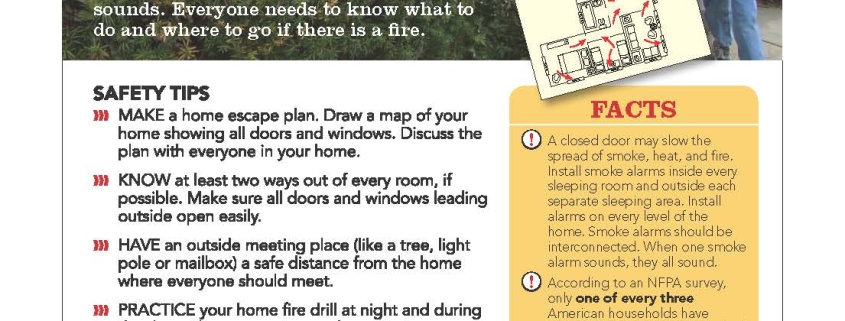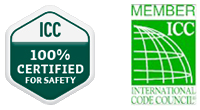Blocked Exits Can Become Fire Traps
Keep Doors and Windows Clear to Ensure Home Fire Safety
For many people, home is a sanctuary filled with items that make them feel comfortable and safe. But when furniture, boxes and other items block or clutter doors and windows, they can become inadvertent fire hazards that threaten or altogether eliminate occupants’ ability to escape a fire.
According to the nonprofit National Fire Protection Association’s NFPA 101, Life Safety Code ®, every sleeping room and living area in the home must have two clear ways out – usually a door and a window. To ensure that all ways out are easily reached, the following steps should be taken:
- Remove any interior key operated locks or padlocks on doors.
- Check to see that all windows open and close easily. Remove any nails or paint that jam them shut.
- If you have security bars on one or more windows make sure they have quick release devices that everyone in your home knows how to use.
- If you use permanent hurricane shutters during storms, remember to put them back in the open position when there is no longer a storm threat. If you use plywood sheets, remove them when the inclement weather passes.
- Remove all smaller items in and around windows, including potted plants, which can slow down escape.
Clear and uncluttered ways out serve as part of an effective home fire escape plan. After making sure all your ways out are not blocked and easy to use, create a plan for how everyone will get out in a fire. Choose a meeting place outside in front of your home where everyone can meet upon exiting, and make sure everyone knows the local emergency phone number to alert the local fire department. Check to see that working smoke alarms have been properly installed throughout your home, and that everyone knows the sound the alarm makes when there’s a fire. Then practice your escape drill regularly, at least twice a year.
A few minor adjustments and relocated items, as needed, can make a life-saving difference for all members of the household. For additional information about exits in the home, or to learn more about home escape planning and practice, contact the Central Keystone COG at 570-522-1326 or visit NFPA’s official Web site at www.nfpa.org/homeescape. Click the links below for handouts and flyers published by the NFPA & the US Fire Administration:



